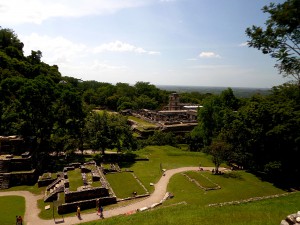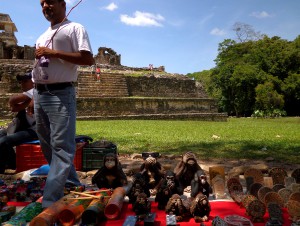Visiting Los Pueblos Indígenas in Mexico Posted by Jakob Gibbons on Aug 24, 2015 in Spanish Vocabulary
Of all the Americas, Mexico has the largest indigenous population, composed of nearly 16 million people from dozens of different Native American backgrounds, or almost a seventh of its massive population. For the language enthusiast like you or I, this offers 68 different idiomas indígenas with millions of speakers in this giant country. But even for those of us not taken with languages, it means great precolumbian archeological sites to visit. Of the 33 UNESCO World Heritage Sites scattered throughout Mexico, it’s no coincidence that many of them are ruins and other artifacts of Mexico’s rich indigenous populations.
Los pueblos indígenas, or indigenous peoples, make Mexico one of the most culturally diverse hispanophone countries in the world. This year, in visiting some of the ruins they left behind centuries ago before the arrival of European colonizers, I had a chance to see some of the history and the present-day culture of these groups.
Here’s a crash course on the Spanish you’ll need to navigate famous indigenous ruins like Teotihuacán, Palenque, and Tulum.
When visiting las ruinas precolombinas, you’ll first have to get there. From big urban centers like Mexico City, that just means a simple ride on the autobus. But when coming from more isolated areas in the South or the Yucatán, for example, you’ll probably have to take a collectivo or a combi.
Once you’ve arrived at the gates, it’s time to pagar la entrada, which can range from about 40 to 80 Mexican pesos, or around $3-5 US dollars. Normally your bus or collectivo will drop you off right at the gate, and once you’ve paid you can proceed inside to explore sprawling precolumbian cities and the ruins they left behind.
Somewhere around the gates will inevitably be a swarm of guías, folks lying in wait to try to talk you into guided tours for a small fee. But these guías aren’t the only informal entrepreneurs looking to earn a few pesos from las turistas: you’ll see all sorts of vendedores spread out on all sides, inside and outside the ruin sites.
People, indigenous and others, set up small kiosks or roll out blankets in the grass to sell an impressive variety of trinkets and knick-knacks, of questionable practical use but the perfect regalitos to buy and bring back home to family and friends.
Sometimes the prices are set in stone as resilient as that of the temples in their backdrop, but other times you’ll find these salesmen willing to haggle a bit. You can feel them out by starting with a “¿Cuánto sale?” or synonymously “¿cuánto cuesta?” or just simply “¿cuánto es?”
At the end of your precolumbian journey through Mexico, you’ll probably have lots of great photos, a piece of ‘indigenous craftwork’ that looks suspiciously like a pipe, one of those terrible bird noise things that seem to be sold at every architectural site across the country, and some insight into the culturas precolombinas of the region. Don’t forget to give the vendor or the cab driver a few pesos for a propina on your way out!
Vocabulario:
los pueblos indígenas – indigenous peoples, indigenous populations
los idiomas indígenas – indigenous languages
las ruinas precolombinas – precolumbian ruins
el collectivo – collective or shared taxi; normally a van or SUV that waits until it is full or almost full before leaving along a predetermined route
el combi – a van used as a bus or shuttle, usually to carry people between local towns and surrounding villages
pagar la entrada – to pay the entry fee or cover
el/la guía turistica – tour guide
la turista – tourist
el vendedor – seller, vendor
el regal(it)o – gift, present
¿cuánto sale? – “How much (does it) cost?” This is Mexican Spanish, and is particularly popular around Mexico City. It’s virtually interchangeable with “¿cuánto cuesta?”
Have you been to or would you like to visit some of the ruinas indígenas in Mexico or another Spanish-speaking country? Share your experiences and handiest phrases here in the comments!

Build vocabulary, practice pronunciation, and more with Transparent Language Online. Available anytime, anywhere, on any device.







